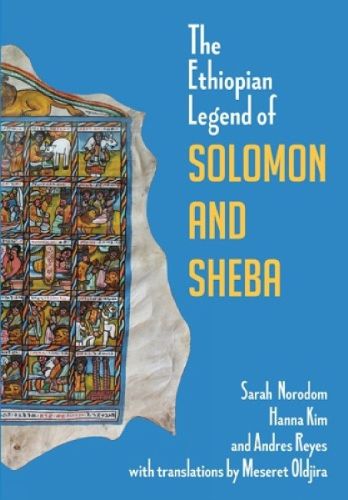Readings Newsletter
Become a Readings Member to make your shopping experience even easier.
Sign in or sign up for free!
You’re not far away from qualifying for FREE standard shipping within Australia
You’ve qualified for FREE standard shipping within Australia
The cart is loading…






The Queen of Sheba is one of the most famous women of antiquity, rivaled only by Cleopatra and Helen of Troy for wealth, power and beauty. She is best known for her legendary meeting with King Solomon, an encounter that has resonated through time, nowhere more powerfully than in Ethiopia, where she is a foundational figures within the Ethiopian Church. There, the legend is known not only through the text called the Kebra Nagast, but also through traditional paintings.
One of the most impressive of these paintings is a goatskin example by the artist Janbaru Wandemmu, at Groton School, USA, given by Professor Asrat Woldeyes, personal physician to Haile Selassie. The painting, which shows the legend in 25 panels, is presented here alongside another 56-panel work. This book illustrates the scenes from both paintings, with translations of their accompanying texts and an introduction.
$9.00 standard shipping within Australia
FREE standard shipping within Australia for orders over $100.00
Express & International shipping calculated at checkout
The Queen of Sheba is one of the most famous women of antiquity, rivaled only by Cleopatra and Helen of Troy for wealth, power and beauty. She is best known for her legendary meeting with King Solomon, an encounter that has resonated through time, nowhere more powerfully than in Ethiopia, where she is a foundational figures within the Ethiopian Church. There, the legend is known not only through the text called the Kebra Nagast, but also through traditional paintings.
One of the most impressive of these paintings is a goatskin example by the artist Janbaru Wandemmu, at Groton School, USA, given by Professor Asrat Woldeyes, personal physician to Haile Selassie. The painting, which shows the legend in 25 panels, is presented here alongside another 56-panel work. This book illustrates the scenes from both paintings, with translations of their accompanying texts and an introduction.